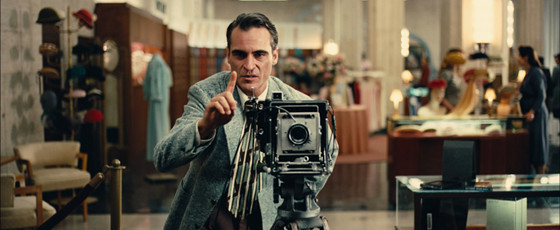1 Tip to Improve Your On-Camera Technique
I want you to watch a feature film with the sound off. Sound boring? Get over it. This will change your film acting forever. As you look at the film I want you to notice the way the lead actors move versus the way the day players move. You will almost always find that the most famous and successful actors in a film move the least.
Some teachers refer to this as stillness. That is an inadequate description and a reductive concept that does not speak to the depth of this concern. You can address this matter through a more rigorous strategy I call “minimum movement.”
Actors feel like they have to entertain. That is a noble desire. But I am going to ask you to please stop—stop feeling like you have to do something. I’m not saying you will never do anything in a film performance. But trust me, do more nothing.
There is a lot to nothing.
Look in the mirror right now. Now, stop making that pursed lip “good looking” face you make every time. Knock it off. You look great. I want you to just relax every one of the 43 muscles in your face. Now that is a work of art.
That is the face a pro film editor wants. Your poker face. The audience might not know it but they want an actors blank face, too. Your inner monologue should be racing away, but we don’t want you to move a muscle to indicate those intentions.
Let filmmakers take your neutral expression and slam it next to a dramatic image in a montage. This will allow the audience to create their own meaning from the collision of these two ideas. It will make them active viewers rather than passive. They will become part of your performance by creating their own assumptions about it. Collaborate with them. They will love you for it. And from this seduction, this love affair, between audience and enigma, a star is born.
The second you start contorting your face or flailing about, you are insisting on what the audience is meant to believe about your performance. More is less, every time. Let the audience discover their own truth about a moment.
I’m not saying to never do anything, but hang the flashes of brilliance in your work like paintings on a gallery’s plain white wall. That is how your flourishes will pop out and communicate key story elements. If you are mostly a blank slate, this will underline the brave choices you make in the instances when your performance breaks out of this containment.
I have heard the buzz word “specificity” thrown around in this arena so many times that it’s lost all meaning. You really have to get specific with your “specificity” I find, and not just pay it lip service.
Just as you would speak clearly, move clearly. Use props precisely. Do nothing extraneous. Avoid disrupting the basic communications of the scene with even minute distractions. Keep your eyes available to the camera as often as humanly possible. Obsess about the varied logistics of this practice before takes and during rehearsal so that you might be free of these concerns between action and cut.
Reduce every move you make down to only the most essential components. Start by picturing yourself as a mannequin on roller skates and build from that image.
And when it is time for the emotional work, filter the power of your feelings through this very containment method I describe. Emotional work looks best on camera when the feeling is played as an obstacle, and minimum movement can help tremendously in this effort.
I am sad to say it, but actors who can deliver deep emotion are not uncommon. However, an actor who has perfected minimum movement and can hold a frame like a pro while experiencing intense emotion are major contenders every time they audition for a production company. They are very rare.
It takes a lot of practice to deploy minimum movement, even more so until a very detail-oriented instructor guides you through its nuances. We can only scratch the surface of many acting concepts through writing. Like sports, acting is something that must be practiced. Minimum movement must be experienced during fully committed performances. Reconciling your minimum movement with your emotional work is best done in class, during precisely formulated exercises and scene study. You will want to focus on developing this movement habit for several months so that you can then place your attention on more artistic concerns.
Most movie stars spend years watching dailies and perfecting their minimum movement before they are ever at the top of their game. The good news is you can develop this practice right now. And when you do master minimum movement, casting directors will view you as a seasoned pro, DPs will love to work with you, and directors will feel comfortable putting you in scenes with the A-list talent.
Get this under your belt fast and get ready to see a positive change in your booking ratio. Attempt to work like this in your very next acting class, whatever that class happens to be. If the teacher rejects this approach then go watch another movie with the sound off. Just see the way the successful actors move. You see it, right?
Now, trust your own eyes and begin the journey of replicating this star-making practice in your own work.
